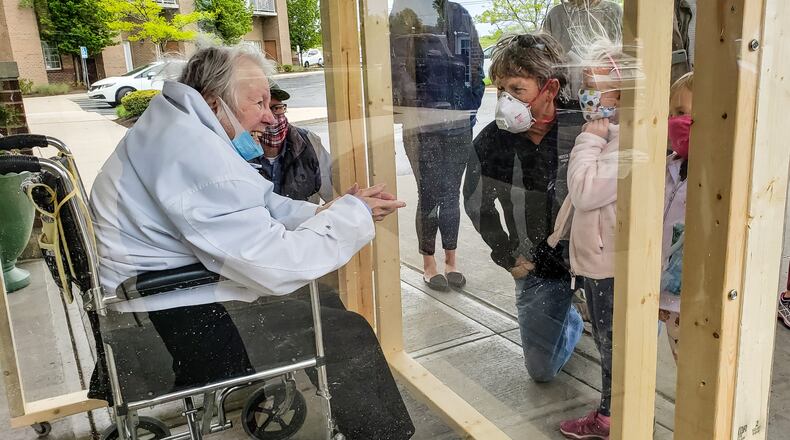Indoor visits will hinge on a number of factors, including staffing levels, COVID-19 cases within a facility, access to testing by the facility and supplies of personal protective equipment. Each resident will be permitted up to two visitors, who will be required to wear masks, be screened and pre-schedule their visits.
Vulnerable residents who live in assisted living or nursing home communities are at a high risk from the novel coronavirus while the spread remains high in the community. At the same time, visitor restrictions meant to protect residents from the coronavirus have led to a many residents struggling with isolation.
Since April 15, when the data started to be collected, 2,619 Ohioans died from coronavirus who lived in long-term care communities ― nursing homes, assisted living facilities and homes for people with developmental disabilities.
Outdoor visits were allowed to resume July 20 for nursing homes and June 8 for assisted living communities.
Some facilities have chosen not to resume visits or started and then stopped out of concern about widespread cases in surrounding towns where visitors live.
Nursing homes and assisted living facilities have struggled with short staff and increased demands for infection control during the pandemic.
Testing alone has been an enormous challenge for the facilities, from figuring out the logistics to some not able to get results fast enough to be useful as a screening tool.
Between both staff and residents in Ohio nursing homes and assisted living facilities, about 240,000 people need regularly tested – 160,000 with nursing homes and 80,000 with assisted livings. The frequency of testing depends on the percent of coronavirus tests in the county coming back positive.
NEW ➡ We are now recommending that all residential colleges and universities regularly test a sample population of their asymptomatic students. Some schools are already doing this.
— Governor Mike DeWine (@GovMikeDeWine) September 24, 2020
The Ohio Department of Health on Thursday reported 147,744 confirmed and probable cases, including 4,715 deaths and 15,051 hospitalizations. Ohio’s 21-day average caseload is now below 1,000.
The Ohio Senate this week voted 20-12 in favor of Senate Bill 311, which would prohibit the administration from issuing a statewide quarantine order that includes people who are not ill or haven’t been exposed to infectious diseases.
“This bill cannot become law,” said DeWine, adding that it would make it impossible for future governors to quickly respond to public health crises. He promised to veto SB311 if it reaches his desk.
Ohio Senate Republican spokesman John Fortney said the lawmakers' position is consistent with the views of the U.S. Justice Department.
"U.S. Attorney General William Barr recently described the stay-at-home orders as one of the ‘greatest intrusion(s) on civil liberties in American history,’” Fortney said.

